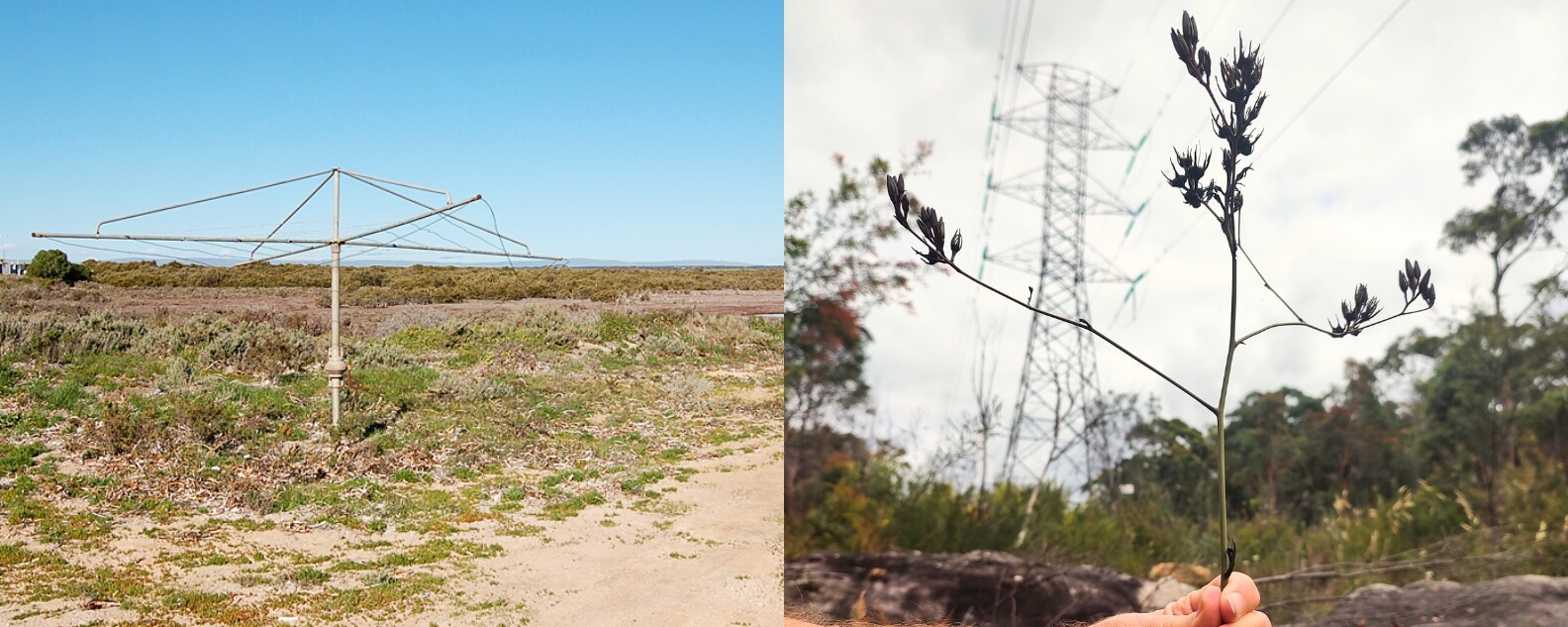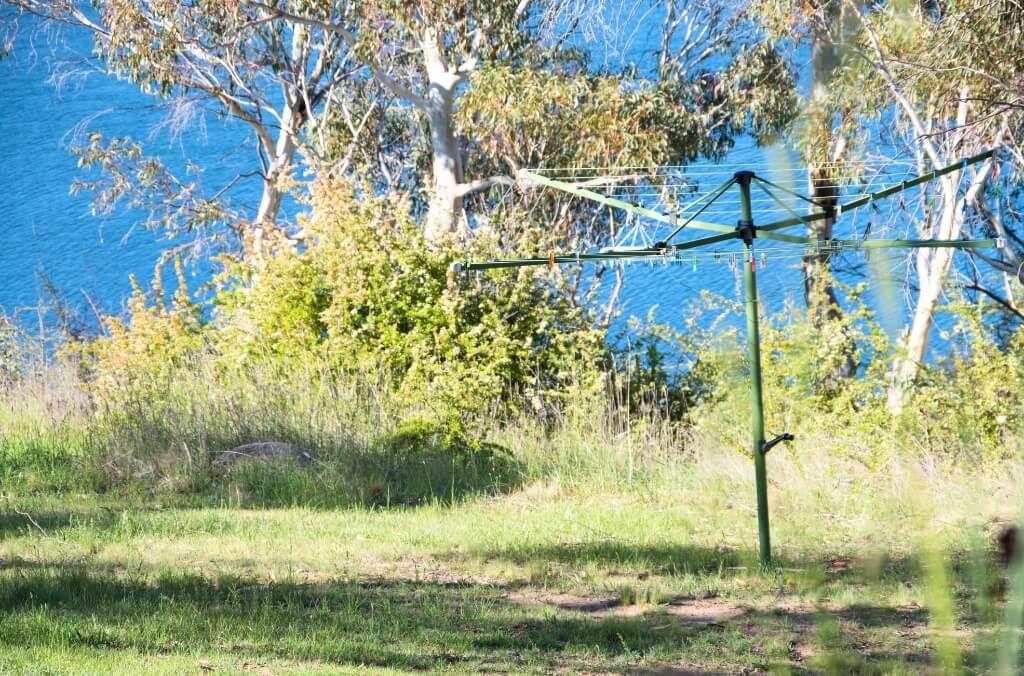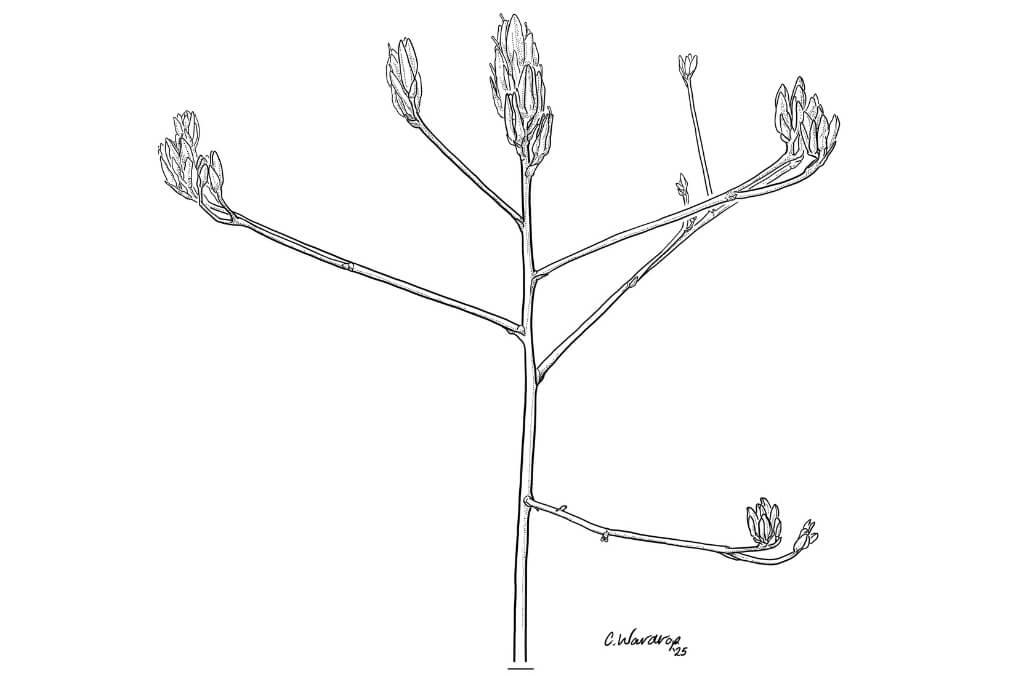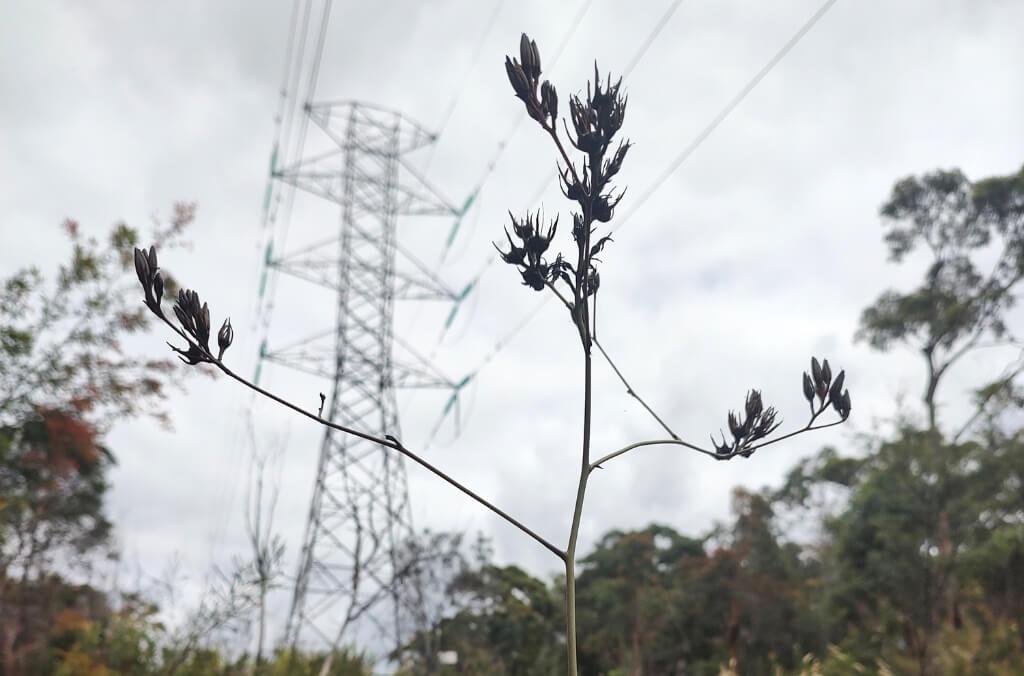New species of plant named after iconic 'Hills Hoist' clothesline
Botanists have discovered a new species of Bloodroot – with a striking resemblance to one of Australia’s most recognisable design icons.

Backyard icon to bush bloom
Botanists have discovered a new species of plant – with a striking resemblance to one of Australia’s most recognisable design icons.
Scientists from Botanic Gardens of Sydney and the Department of Biodiversity, Conservation and Attractions in Western Australia have just named three new bloodroot species from NSW.
Until now, all plants in the Sydney region were thought to be one variable species under the name Haemodorum planifolium.
Bloodroots are widely used in Australian indigenous cultures for the striking red dye found in the roots and fruit.
Dr Russell Barrett of Botanic Gardens of Sydney said: “One of the new species has flowering stalks with a very distinctive shape. Unlike the more common Strap-leaved Bloodroot, this new species has clusters of flowers held on long branches that often stick out at right-angles to the main stalk, resembling the iconic Australian ‘Hills Hoist’ clothesline.”
For this reason, the botanists chose to name the new species Haemodorum collevatum, with the species name combining the Latin words collis (meaning hills) and levatum (meaning lift-up, or hoist).
This new species was first collected in 1803 near Newcastle by famed botanist Robert Brown but has only been identified as being new to science this year.
Dr Russell Barrett of Botanic Gardens of Sydney said:
“One of the new species has flowering stalks with a very distinctive shape. Unlike the more common Strap-leaved Bloodroot, this new species has clusters of flowers held on long branches that often stick out at right-angles to the main stalk, resembling the iconic Australian ‘Hills Hoist’ clothesline.”

Dr Russell Barrett and Hills Hoist Clothesline Bloodroot 
The iconic Hills Hoist clothesline 
Haemodorum collevatum botanical illustration by Catherine Wardrop 
Hills Hoist clothesline Bloodroot in the wild
Citizen science at the root of new discovery
Previously this species was grouped with Haemodorum planifolium from the Sydney region, also collected by Brown.
The four species and their locations:
- Haemodorum collevatum has a limited distribution in the Northern and Central Coast regions from Sydney to Newcastle.
- Haemodorum brevistylum occurs mainly in the South Coast and Southern Tablelands regions, north to the Central Coast and Central Tablelands of New South Wales.
- Haemodorum celsum is a species of the Northern Tablelands region of New South Wales and the Granite Belt in the southern Darling Downs District of Queensland.
- Haemodorum planifolium (the original species, now re-described) occurs in the Central Coast and Central Tablelands regions of New South Wales (i.e. Wollongong to Gosford, inland to Newnes).
Citizen science records on iNaturalist were very useful for Dr Barrett and his collaborator Dr Terry Macfarlane from WA in assessing the variation found in these four species and identifying consistent morphological differences.
The two botanists are both experts on the genus Haemodorum and worked from opposite sides of the country to identify the new species.
Published in the Western Australian Herbarium journal Nuytsia, the research paper naming these new species is freely available here: https://florabase.dbca.wa.gov.au/nuytsia/
This paper contributes to a new international review of the entire bloodroot family Haemodoraceae, published in Nuytsia at the same time.
About Botanic Gardens of Sydney
Botanic Gardens of Sydney encompasses three world-leading botanic gardens, Australia’s premier botanical research institute, and Sydney’s leading outdoor activation precinct.
The organisation is founded on a passion for botanical science and horticulture and enriched by its relationship with Traditional Custodians.
Botanic Gardens of Sydney envisages a fair and sustainable world where people, communities and institutions are informed, inspired and motivated to recognise the power of plants and support their conservation.
Contact
Media contact: Ella Williams
Ph: (02) 9231 8122
Email: [email protected]